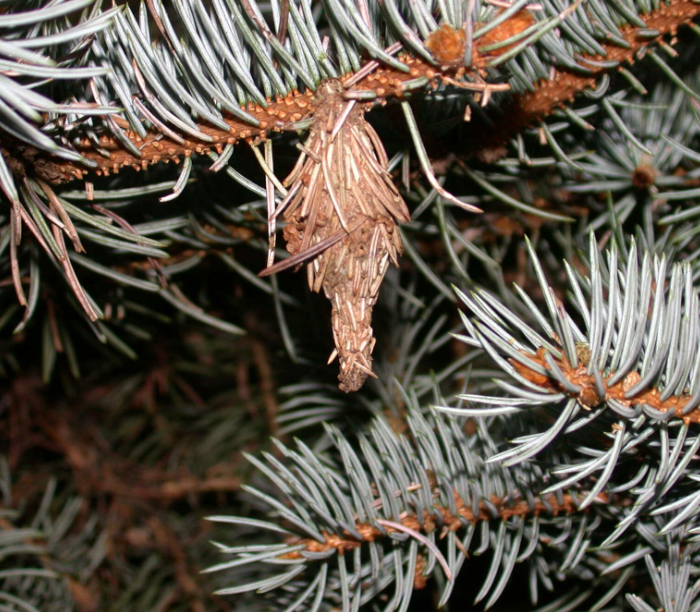The small, silk weaving that resembles a Christmas tree ornament on your favorite tree or shrub is not decoration. These bags protect the caterpillars, or larvae, pupae, female adults and eggs of bagworms (Order Lepidoptera Family Psychidae) Bagworms attack trees and shrubs including: evergreens such as arborvitae, cedars, cypress, junipers, pines and spruce broadleaved plants such as apple, basswood, black locust, boxelder, elm, honey locust, Indian hawthorn, maple, various oaks, persimmon, sumac, sycamore, wild cherry and willow.
Although bagworms are not abundant every year, once a plant is infested the insect becomes a persistent problem unless controlled. Texas has several species of bagworms. Each species’ is slightly different habits and life cycles affect the timing of control measures. Infestations, which may not be noticed at first, can defoliate trees and shrubs, and kill these plants if left unchecked. Eggs are laid in the fall and hatch in the spring. Caterpillars grow throughout the summer and pupate in August or September. After a 3-week pupal period, the adult moths emerge. After mating, the females deposit their eggs and die.
Birds, insect parasites and insect predators are natural enemies of bagworms. Bird predation and insect parasitism can help keep bagworm outbreaks brief. However, natural enemies often can’t prevent the bagworms from damaging plants. Handpicking bagworms off the plants is the cheapest way to control them, particularly in the winter months. Pick off all of the bags and destroy or discard them. Eggs in bags thrown on the ground will hatch in the spring and develop into larvae that could reinfest the plants.
If handpicking isn’t practical or safe, use insecticide spray. Apply insecticide soon after bagworm eggs have hatched or while the larvae are small and feeding. Determine the right time for treatment by collecting bags in late winter and keeping them in a container out of sunlight. Once the caterpillars hatch from the bags in the container, apply insecticide to plants.
Chemical control is not as effective when the caterpillars close their bags to molt or pupate. In most areas, insecticides applied in April, May and June are effective. Use insecticides containing acephate (Orthene®), Bacillus thuringiensis var. kurstaki, carbaryl (Sevin®), pyrethroids (bifenthrin, cyfluthrin, cypermethrin, lambda-cyhalothrin, permethrin, etc.), spinosad, azadirachtin, neem oil, malathion, pyrethrins or insecticidal soap. Use spray equipment that gives complete coverage of all foliage. Hire a professional exterminator if you do not have adequate equipment. For more information on these or any other agricultural topic please contact the Hopkins County Extension Office at 903-885-3443 or email me at [email protected].







